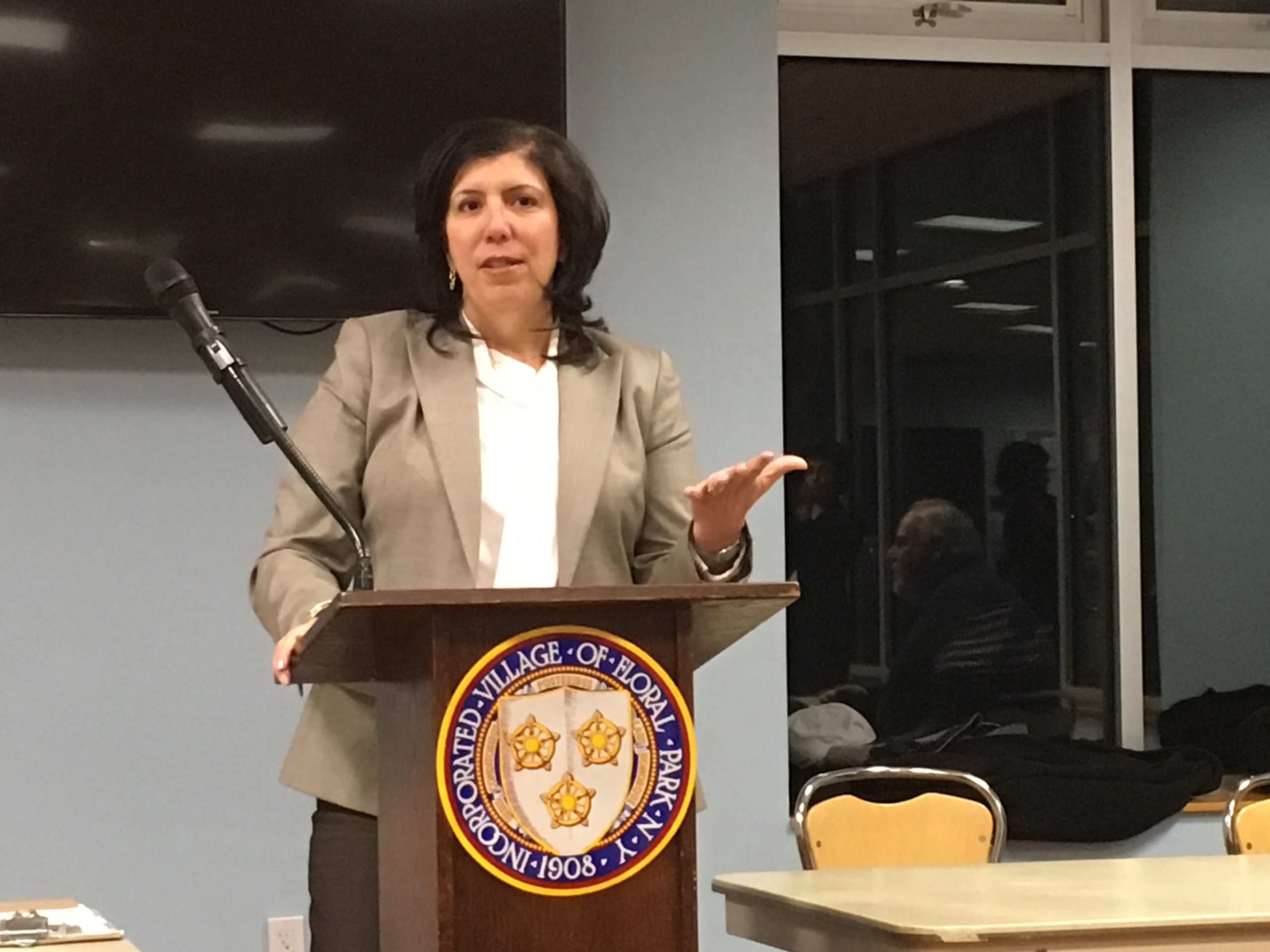The Nassau County District Attorney’s office will soon take further steps toward opening a facility for teens struggling with opioid addiction.
The office will select an organization in the coming weeks to operate a facility where adolescents can be treated for drug withdrawal before moving into long-term addiction treatment, District Attorney Madeline Singas said last week.
The DA’s office issued a request for proposals in November for such a program, which would supplement its existing partnership with the New Hope Crisis Center in Freeport. That facility cannot accommodate anyone younger than 18, so a separate location is needed, Singas said.
“It’s needed in this county, sadly, for kids that are that young to have that kind of treatment,” Singas told the South Side Civic Association in Floral Park last Thursday.
The DA’s office will fund the new eight-to-10-bed facility with $2.5 million from its asset forfeiture fund, a pool of money seized from criminals and used to fund public programs, Singas said.
The new program will start at least six months from now, Brendan Brosh, a Singas spokesman, said in an email.
The office paid the New Hope Crisis Center, operated by Port Jefferson-based Maryhaven Center for Hope, $685,000 from the asset forfeiture fund to keep its 30-bed facility open to new patients 24 hours a day, Brosh said.
Heroin and other opioids, such as the prescription drugs oxycodone and codeine, killed 210 people in Nassau County in 2015, according to county data.
Addicts who are hospitalized for drug overdoses go through withdrawal after they are released, something their families are often not equipped to handle, Singas told the civic group. They often subsequently relapse and start using drugs again, she said.
The New Hope Crisis Center gives opioid addicts short-term treatment and offer social services to help their families as they try to get the addicts long-term care, Singas said. The goal is to do the same for teens at the new facility, she said.
“That person’s boots never have to hit the ground — they can go from an emergency room to Maryhaven to a long-term treatment facility,'” Singas said.
Singas’ plan for the adolescent facility has drawn praise from drug treatment efforts.
It’s one of several initiatives in her office to better treat and prevent drug use among young people.
DA’s office staff also train school nurses to recognize signs of drug addiction and overdose, and show them how to administer naloxone, an antidote for opioid overdoses, Singas said.
“Instead of sort of not recognizing it, we’re saying to schools, ‘Look, it’s happening, you can’t deny that it’s happening, so let’s help get these kids the help that they need,'” Singas said.



